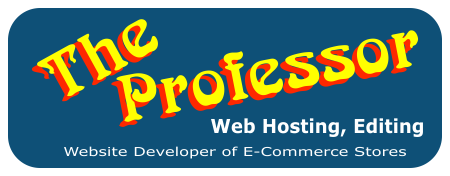10 Jul


Posted By
0 Comment(s)
2018 View(s)
Website Developer Help and Tuition
,
On Page SEO, Editing website.
Optimizing product pages for e-commerce is crucial
for improving search engine rankings and increasing conversions. Here are some comprehensive tips:1. Keyword Research and Optimization
- Identify Keywords: Use tools like Google Keyword Planner, Ahrefs, or SEMrush to find relevant keywords.
- Include Keywords: Integrate primary and secondary keywords naturally in product titles, descriptions, meta descriptions, URLs, and image alt texts.
2. Compelling Product Titles
- Descriptive and Clear: Include the product name, brand, model, and key features.
- Keyword-Rich: Incorporate the primary keyword for better SEO.
3. Detailed Product Descriptions
- Unique Content: Avoid duplicate content by writing unique descriptions for each product.
- Benefits and Features: Highlight key features, benefits, and specifications.
- Storytelling: Use storytelling to connect with customers emotionally and provide context.
4. High-Quality Images and Videos
- Multiple Angles: Show products from different angles to provide a comprehensive view.
- Zoom Capability: Allow users to zoom in on images for a closer look.
- Videos: Include product demonstration videos or unboxing videos.
5. User Reviews and Ratings
- Encourage Reviews: Send follow-up emails to customers asking for reviews.
- Display Ratings: Show average ratings and review snippets prominently on the product page.
- Respond to Reviews: Engage with customers by responding to their reviews.
6. Clear Call to Action (CTA)
- Prominent Placement: Ensure the CTA button (e.g., “Add to Cart”) is easily visible.
- Action-Oriented Text: Use strong action words like “Buy Now” or “Get Yours Today.”
7. Pricing and Promotions
- Transparent Pricing: Display the price clearly, including any discounts or promotions.
- Limited-Time Offers: Create urgency with time-sensitive deals.
- Bundling: Offer product bundles or related items at a discount.
8. Fast Page Load Times
- Optimize Images: Compress images without losing quality to reduce load times.
- Efficient Code: Minimize the use of heavy scripts and optimize code.
- Content Delivery Network (CDN): Use a CDN to speed up content delivery.
9. Mobile Optimization
- Responsive Design: Ensure the product page is mobile-friendly.
- Touch-Friendly: Make buttons and links large enough for easy tapping on mobile devices.
10. Social Proof and Trust Signals
- Badges and Certifications: Display trust badges (e.g., SSL certificates, money-back guarantees).
- Testimonials: Include customer testimonials and success stories.
- Social Media Links: Show links to your social media profiles and encourage sharing.
11. Search Engine Optimization (SEO)
- Schema Markup: Use structured data to help search engines understand your content.
- Meta Descriptions: Write compelling meta descriptions that include primary keywords.
- Breadcrumbs: Use breadcrumb navigation to improve site structure and user experience.
12. Analytics and A/B Testing
- Track Performance: Use tools like Google Analytics to monitor page performance and user behavior.
- A/B Testing: Test different elements (e.g., headlines, images, CTAs) to see what works best.
13. Clear Return Policy and FAQs
- Return Policy: Display your return and refund policy clearly.
- FAQs: Include a FAQ section to address common customer questions and concerns.
14. Internal Linking
- Related Products: Link to related products to encourage cross-selling.
- Category Links: Provide links to relevant categories for easy navigation.
15. Enhanced Customer Experience
- Live Chat: Offer live chat support for immediate assistance.
- Personalization: Use personalized recommendations based on browsing history or past purchases.
By implementing these strategies, you can create a product page that not only ranks well on search engines but also converts visitors into customers effectively.

Leave a Comment